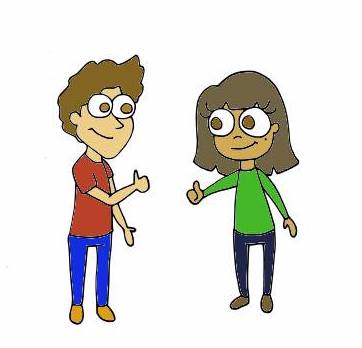30 Peer-Reviewed Sources
Earlier, you read the term “peer review”—this term is probably new to you. Peer review means that experts have anonymously reviewed, critiqued, and recommended (or not recommended) an article for publication. It is important to know what this term means, because you should incorporate peer-reviewed sources into your scholarly writing about nursing and health-related issues. Time to delve deeper and better understand the peer-review process.
The peer-review process
The peer-review process typically applies to journals as opposed to books or websites. Journals focus on a specific discipline or a field of study (e.g., nursing) and are published on a regular basis (monthly, quarterly, etc.). The intended reading audience is other experts, usually not the general public. Journals are considered scholarly publications and each issue contains many articles mainly written by professors, researchers, practitioners, and other experts.
In nursing, authors are considered experts based on the following:
- They have a PhD or other graduate education.
- They have specialized in-depth knowledge.
- They have expertise and training in research and analysis and/or nursing practice.
- They are a student or a patient with first-hand experience to share (e.g., a patient narrative)
Many journals are not peer-reviewed, and these sources are generally not considered scholarly. When an author writes an article, they may submit it to a peer-reviewed journal to be published. Before the journal accepts the article, it is reviewed by experts in the same area of study: their peers. If the reviewers consider the research or work to be lacking quality or relevance, the author is asked to make changes or the manuscript is rejected. If the reviewers consider the work to be of high quality and relevant, the manuscript is accepted. This is why some assignments require you to use articles published in peer-reviewed journals—these sources contain rigorous research and/or theoretical work.
Figure 3.9: The peer-review process
Some experts, such as professors, also publish their evidence-informed research in non-peer-reviewed sources like books and newspapers. These sources may still be considered authoritative and contain expert research and are often reviewed by editors for accuracy, but they do not count as peer-reviewed sources. It is important to know the difference, especially if your instructor specifically requests that you use articles from peer-reviewed journals.
The need to remain critical
Overall, even though the peer-review process is used to evaluate research and other scholarly work, you as the reader need to remain critical and conduct your own evaluation of what you are reading. Remember, the CRAAP evaluation tool helps you remain critical.
The peer-review process is the agreed-upon method for checking credibility in the academic world, but it is not without its flaws. Articles with inaccurate research methods, and therefore flawed conclusions, have been published. Fortunately, most of these papers are retracted and the research is removed from the journal. For example, The Lancet (a prominent medical journal) retracted a 1998 study linking vaccines to autism due to ethical misconduct, serious study flaws, and a biased sample. The work of researchers can also be funded by outside corporations, and many journals require authors to state any conflicts of interest within their paper. If you come across an admission of conflict when reading an article, it will be up to you to evaluate whether or not you feel the research was influenced by the corporation’s own agenda.
Student Tip
WARNING: Google and Google Scholar
You also need to be vigilant when using Google and Google Scholar to find peer-reviewed journals, because some non-credible journals falsely claim to be peer reviewed. Your library provides you with access to databases that contain authorized peer-reviewed journals and filter out the non-credible ones.
Attribution statement
Content from this page was remixed with our own original content and adapted with editorial changes from:
Write Here, Right Now by Dr. Paul Chafe, Aaron Tucker with chapters from Dr. Kari Maaren, Dr. Martha Adante, Val Lem, Trina Grover and Kelly Dermody, under a Creative Commons Attribution 4.0 International License. Download this book for free at: https://pressbooks.library.ryerson.ca/writehere/


